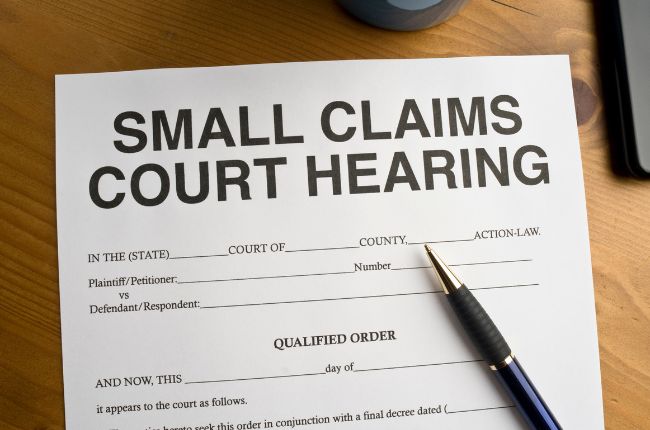A small claims court is a special court where disputes are resolved quickly and inexpensively. The rules are simple and informal. The person who initiates the claim is the plaintiff, and the person who is being sued is the defendant. We assist in drafting those complaints, whether you are the plaintiff or the defendant in the action.
How Does Small Claims Court Work? Fundamentals for Success
Small claims courts provide a forum for resolving minor civil disputes in an efficient and affordable manner. They are ideal for people representing themselves without attorneys, offering a simplified process compared to typical court proceedings. Officially designated small claims courts have monetary limits on the claims they handle, typically less than $15,000. They may also specifically handle cases like landlord/tenant disputes or consumer complaints. Numerous benefits encourage people to utilize small claims for relevant grievances, outlined below.

Overview
Small claims courts resolve disputes under a defined monetary amount through an inexpensive, simple, and informal legal process. Key attributes include:
📚 Designed for people without attorneys (pro se litigation)
📚 Simplified procedural rules compared to civil courts
📚 Strict monetary limits on claims, typically $2,500 to $15,000
📚 Often handle specific case types like landlord/tenant or consumer claims
Benefits of Small Claims Suit
The streamlined small claims process offers numerous advantages:
📚 Inexpensive filing fees and costs
📚 Quick resolution – cases usually decided within 2-3 months
📚 Relaxed procedural and evidentiary rules
📚 Limited objections and appeals
Case Types
Common small claims disputes involve:
📚 Security deposit retention by landlords
📚 Minor automobile accident damages
📚 Breach of service or sales contracts
📚 Home repair/remodel disagreements
📚 Collection of unpaid bills or debts
📚 Damage to rental property
Plaintiff vs. Defendant
In small claims the parties are simple:
📚 Plaintiff – Person/company initiating the lawsuit
📚 Defendant – Person/company being sued
The plaintiff starts the case over some perceived wrongdoing that caused relatively minor damages based on established monetary limits. They file initial paperwork and pay fees to open the case. The defendant is served notice they are being sued and provided instructions to respond or settle.
The Procedure
A small claims suit follows a direct series of steps:
📚 Plaintiff files complaint paperwork and pays fee
📚 Clerk schedules a hearing date
📚 Plaintiff serves complaint to defendant
📚 Hearing held before judge or magistrate
📚 Judge issues final decision
Getting Assistance
While small claims emphasizes pro se litigation, getting advice can still be very helpful for initial filings and hearing preparation. Assistance can be obtained by:
📚 Legal aid clinics offering guidance
📚 Private attorneys providing limited representation
📚 Paralegals helping organize paperwork
Enforcing the Judgment
If the judgment is in the plaintiff’s favor but the defendant does not pay, additional steps like wage garnishment or property liens may be required to enforce collection. Even without attorneys the simplified small claims process facilitates regular people getting everyday disputes resolved fairly, quickly, affordably and efficiently through special designated courts.
